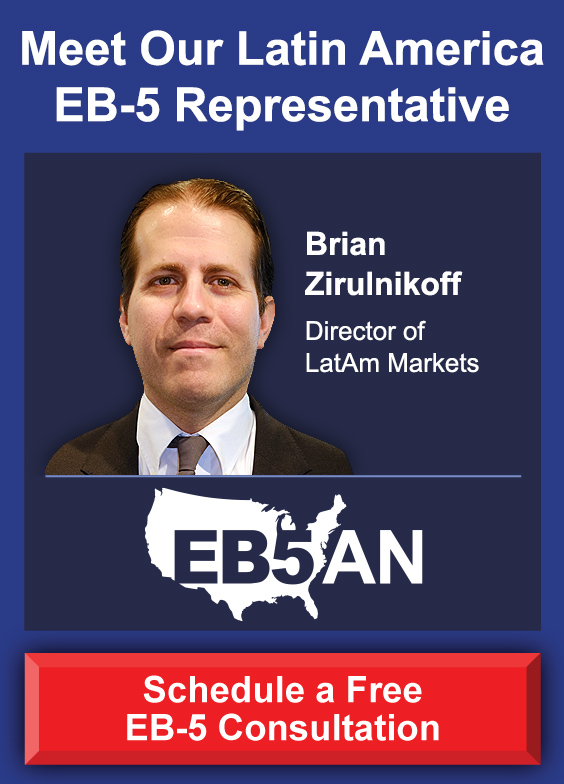When the EB-5 Reform and Integrity Act of 2022 (the “RIA”) introduced the new categories of set-aside visas in March 2022, there was much speculation in the EB-5 industry as to how this measure would help investors avoid long wait times for their visas.
Excessive wait times for EB-5 immigrant petitions have long been common in the EB-5 industry, and USCIS’s processing capacity remains limited despite the reduced volume of EB-5 investment since 2020.
As of March 2023, both Chinese and Indian investors are subject to extensive processing delays caused by limited visa supply.
Fortunately, the RIA has introduced an unprecedented way for EB-5 investors of any nationality to avoid delays caused by visa availability: new categories of set-aside visas.
Nearly a year after the RIA was signed into law and more than six months after the EB-5 Regional Center Program resumed operations, now is the ideal time for foreign nationals from countries with a backlog of EB-5 applications to consider investing in one of the set-aside visa categories. Doing so may allow them to immigrate to the United States significantly faster.
Moreover, USCIS processing statistics for EB-5 petitions during the 2022 fiscal year (October 2021-September 2022) show how beneficial the new set-aside visa categories can be to both the EB-5 program and the U.S. economy.
In this article, we explain how EB-5 investors can qualify for a set-aside visa and thus obtain their Green Cards significantly faster. We then analyze USCIS processing data to demonstrate the important role of the new set-aside visa categories.
The Set-Aside EB-5 Visa Categories
Benefits of the Set-Aside EB-5 Visa Categories
- Reducing Visa Processing Times for EB-5 Investors
- Clearing the EB-5 Visa Backlog Through Set-Aside Visas
- An Important Funding Source for the U.S. Economy
Investing in a Set-Aside EB-5 Visa
The Set-Aside EB-5 Visa Categories
EB-5 Visa Allocation
Each fiscal year, each country that participates in the EB-5 program can receive no more than 7% of the total number of available EB-5 visas.
While most countries have a low volume of EB-5 investors, the few nations with a high demand for EB-5 immigration often find that visa demand exceeds supply.
As a result, EB-5 investors from countries where the number of EB-5 applications exceeds the number of available visas often experience years of additional wait times before obtaining their Green Cards.
Investors from countries with an EB-5 visa backlog are subjected to cutoff dates that delay when they can receive their Green Cards. Chinese and Indian EB-5 investors both face significantly long visa processing times.
How Set-Aside EB-5 Visas Work
Under the RIA, 32% of the yearly number of EB-5 visas is reserved for applicants who invest in any of these three project categories: projects in rural targeted employment areas (“TEAs”) (20%), projects in high-unemployment TEAs (10%), and infrastructure projects (2%).
Since March 2022, foreign nationals who make an EB-5 investment in these categories have been eligible for set-aside visas. EB-5 investors who obtain a set-aside visa are not subject to processing delays caused by limited visa supply—even if their country is experiencing a visa backlog.
This means that EB-5 applicants from China and India who invest in one of the above project categories can avoid years-long delays and immigrate significantly faster.
At the end of each fiscal year, any unused visas in one of the set-aside categories carry over to the same category the following fiscal year.
Benefits of the Set-Aside EB-5 Visa Categories
The vast majority of EB-5 applications come from a few countries with a high demand for the EB-5 visa. Since these countries provide the bulk of the EB-5 capital invested each year, it is beneficial for both the EB-5 program and the U.S. economy for investors to avoid processing delays.
Reducing Visa Processing Times for EB-5 Investors
In recent years, many EB-5 investors have experienced wait times of at least three to five years before obtaining their Green Cards. Wait times are even longer for investors from backlogged countries.
Excessive visa processing delays are detrimental to EB-5 investors for several reasons.
- Unreasonable processing times make investors more vulnerable to changes in the EB-5 program’s policies. For example, if USCIS introduces new requirements for EB-5 projects and regional centers, past investors may not necessarily be “grandfathered in” under the previous rules. This may put their immigration outcome at risk.
The longer an EB-5 investor has to wait for their visa, the more likely this scenario becomes.
- Due to the requirement that EB-5 capital must remain invested in each project, long visa processing times can make planning very difficult for developers and for the investors themselves.
EB-5 investors may have specific career goals in mind when planning to immigrate, and they may want their children to benefit from higher education in the United States. These plans can be derailed by unreasonably long visa processing timelines.
- After an EB-5 applicant invests in a qualifying business and submits Form I-526E (the first application in the EB-5 immigration process), USCIS may submit a request for evidence (“RFE”) or a notice of intent to deny (“NOID”). This may require the investor to submit further documentation about the source of their funds or the project in which they invested.
However, these documents become increasingly harder to find in the years after the initial investment. The EB-5 project may no longer have the relevant records available or it may have undergone restructuring. The escrow agents, accountants, or fund administrators who supervised the flow of the EB-5 capital may no longer be available.
Extending the immigration process even longer, USCIS sometimes issues RFEs several years after an investor’s I-526E petition has been filed. These RFEs ask for updated information, such as a more recent business plan for the project. This means that, due to USCIS’s processing inefficiency, the information an investor provides in Form I-526E may already be out of date by the time the agency reviews the petition.
USCIS may, therefore, issue an RFE solely because a long time has passed since Form I-526E was filed—not because the petition was missing any important information.
- Long processing times damage the EB-5 program’s image and lower global demand for the EB-5 visa. Other countries offer residence-by-investment programs with more reasonable processing times, and foreign nationals may simply choose these options if they find USCIS’s processing times excessive.
Unfortunately, EB-5 investors have few options to appeal to USCIS if their applications are taking too long to be adjudicated.
USCIS allows EB-5 investors to submit an inquiry only if the processing period is “well outside” of the processing time range on USCIS’s “Check Case Processing Times” page.
However, many EB-5 industry members feel that the processing times listed on the USCIS page are not reasonable. For example, as of February 2023, the “normal” processing time for Chinese investors on the USCIS page was 81.5 months—approximately 7 years. The processing time for Indian investors was 47.5 months—nearly 4 years.
USICS has not released the methodology used to calculate the processing times published on their “Check Case Processing Times” page.
Clearing the EB-5 Visa Backlog Through Set-Aside Visas
Processing data for the 2022 fiscal year shows that the backlog of pending I-526E and I-829 petitions is still growing (Form I-829 is the final application for a permanent EB-5 Green Card).
Faster processing through the set-aside visa categories can help USCIS clear the backlog more quickly than otherwise possible.
At the end of FY2022, there were 13,062 pending I-526E petitions and 11,150 pending I-829 petitions.
At the same time, the EB-5 industry has experienced a downturn in Form I-526E filings since FY2020, as shown below:
This trend has continued in FY2022. Most likely, the reduced volume of EB-5 petition filings has been caused by the industry’s readjustment to the RIA and the uncertainty surrounding the lapse of the regional center program.
Even though the number of petition receipts remained low, USCIS processed only 1,415 I-526E petitions and 1,621 I-829 petitions in FY2022.
This demonstrates a clear need for faster processing, and the set-aside visa categories represent an ideal solution to clearing the EB-5 petition backlog and allowing thousands of investors with pending applications to immigrate.
An Important Funding Source for the U.S. Economy
The large backlogs of EB-5 applications also have a negative effect on the demand for EB-5 immigration. This, in turn, deprives the U.S. economy of a convenient source of investment capital that is often available at below-market rates.
Since China entered an EB-5 visa backlog in 2015, the volume of I-526E filings from Chinese investors decreased notably:
These processing delays for Chinese investors may also have had an impact on the yearly amount of EB-5 capital injected into U.S. enterprises.
In 2015 and 2016, the EB-5 program generated an impressive $5.749 billion and $6.012 billion for U.S. businesses. However, given the lower demand from China, the effects of the COVID-19 pandemic and EB-5 policy changes, the yearly volume of EB-5 capital has also decreased since then.
India’s entered an EB-5 visa backlog in October 2022. However, I-526E filings from India may not necessarily decrease for now, as investors from this country can avoid delays through the set-aside visa categories. While the supply of set-aside visas is available, we may also see an increase in EB-5 filings from China.
Clearly, the set-aside visa categories can boost demand for EB-5 immigration, allow thousands of investors to move on in the visa process, and, in turn, provide a valuable funding source for U.S. businesses.
Investing in a Set-Aside EB-5 Visa
With 20% of the total EB-5 visa supply and the added benefit of priority petition processing, the rural TEA category is the best option for EB-5 investors from China and India. Rural TEAs also have more straightforward designation criteria than the high-unemployment TEA and infrastructure categories.
Moreover, renewed demand for EB-5 immigration may deplete the number of set-aside visas in the near future. The large number of rural TEA visas set aside each year makes this the safest option for investors seeking to immigrate as quickly as possible.
It is also noteworthy that, under the RIA, Chinese and Indian holders of non-immigrant visas can immediately adjust their immigration status upon filing Form I-526E. This allows them to live in the United States and quickly obtain an employment authorization document as they wait for their I-526E petition to be adjudicated.
EB5AN has connected over 2,000 EB-5 investors with low-risk investment projects with a 100% USCIS approval rate. To learn how to raise EB-5 funding or invest in a set-aside EB-5 visa, we invite you to schedule a free consultation.
















